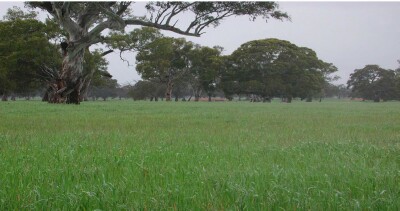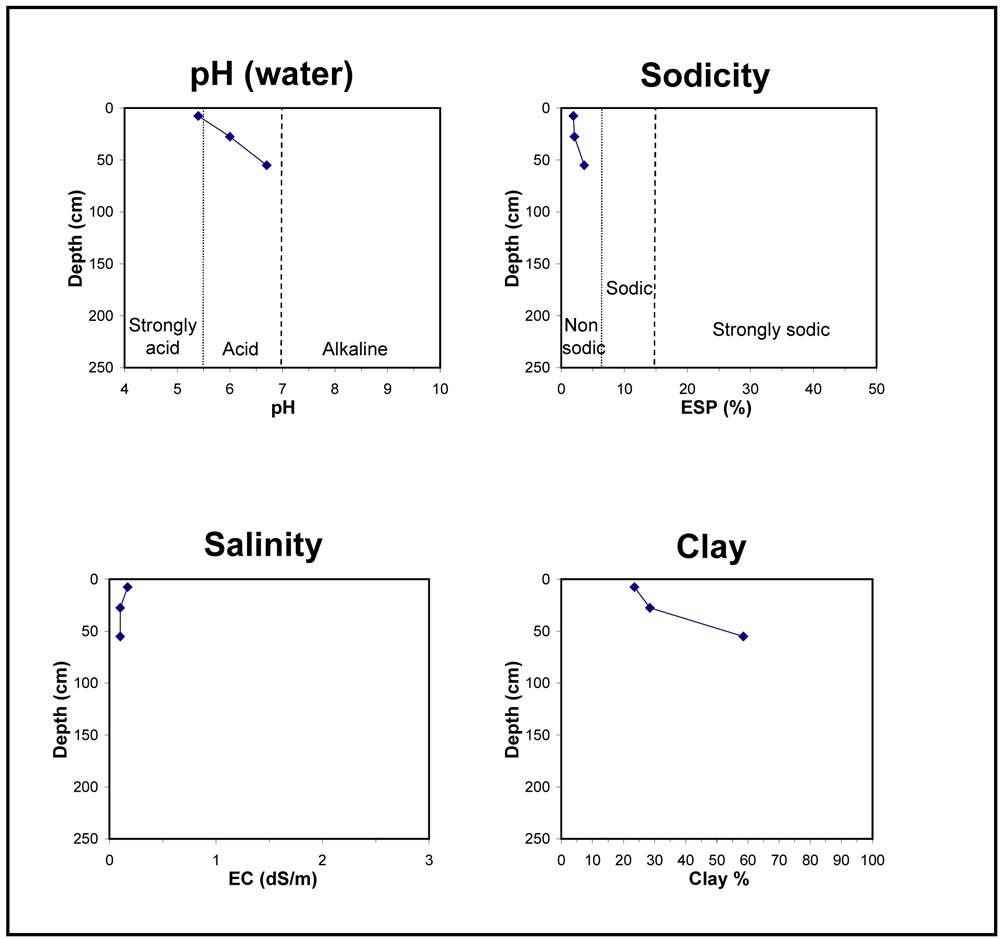GL107
| Site: GL107 | Land Unit: Dundas Redgum |
| Aust. Soil Class.: Ferric (Reticulate?), Eutrophic, Brown CHROMOSOL (confidence level 1). | |
 | General Land Unit Description: The flat surface of the Dundas Tablelands predominantly consists of Brown Chromosols with a ferric horizon, typically occurring above the clay subsoil. The soil is commonly developed over a highly weathered mottled zone. This red and white mottling, sometimes referred to as ‘tiger mottles’ is thought to be the result of deep chemical weathering which occurred during the late Tertiary period. Red gums are the dominant vegetation found on this surface. |
Site Description:
| Geology: Cainozoic duricrust | Landform pattern: Elevated plain/plateau |
| Position in landscape: Flat | Internal drainage: Moderately well - imperfectly drained |
| A1 | 0-15 cm | Very dark brown (10YR2/2) sandy loam, apedal to weak structure, firm consistence when dry, pH 5.4. Transition to: |
| Subsoil | ||
| B1 | 15-40 cm | Very dark greyish brown (10YR3/2) sandy clay, massive structure, very firm consistence when dry, a few ferruginised nodules, pH 6.0. Transition to: |
| B21 | 40-70 cm | Light medium clay, ferruginised nodules are abundant, pH 6. Transition to: |
| B22 | 70-107 cm | Light clay, a few organic segregations, many ferruginised nodules, pH 6.7. |
Key profile features:
- Strongly acidic topsoil
- Ferruginous nodules in subsoil
- Top of the subsoil dispersive when worked when wet



